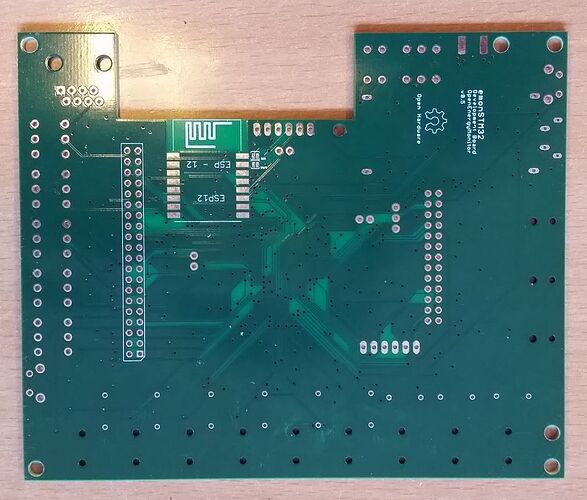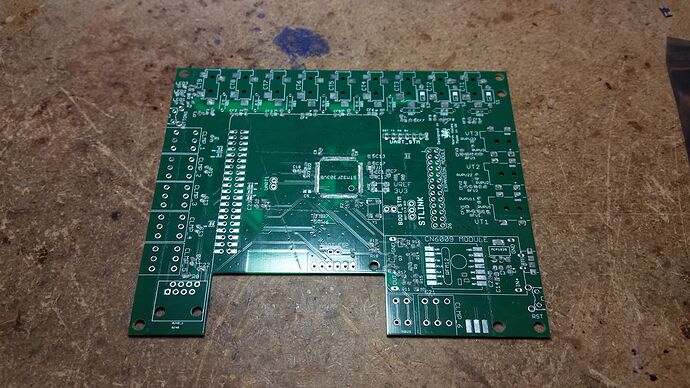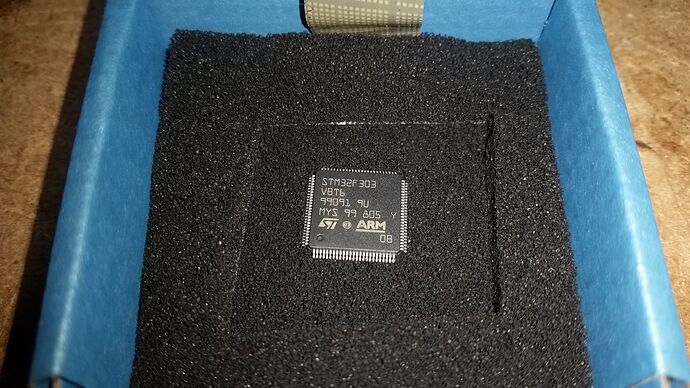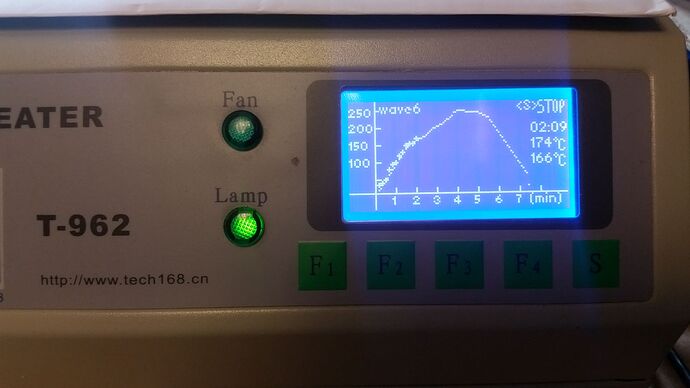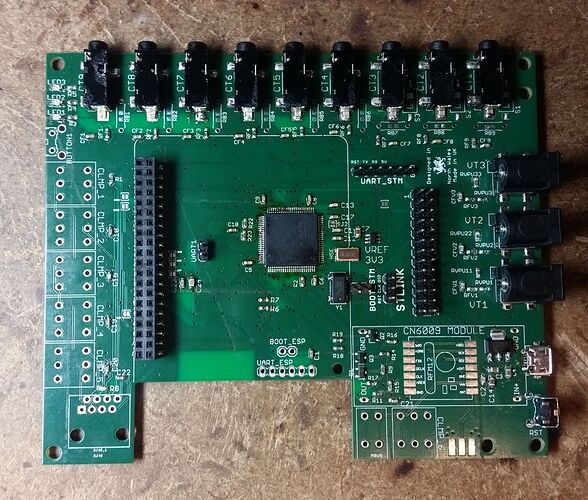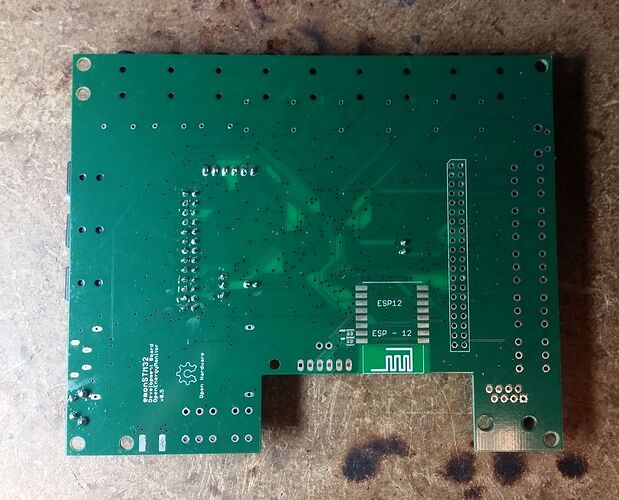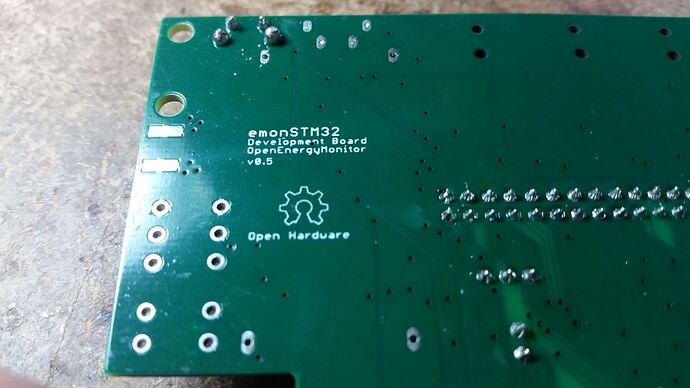Here are a few photos of our new dev board.
below: with solder paste.
a beautiful 100-pin stm32f303
Notes on design to follow in a separate post.
Trys and I are keen to develop the smaller board in parallel. 1VT and 3CT sat on top of an rPi. Something we need to cost out. I think there’s a post somewhere showing this?
Yes: STM32 Development - #280 by TrystanLea

